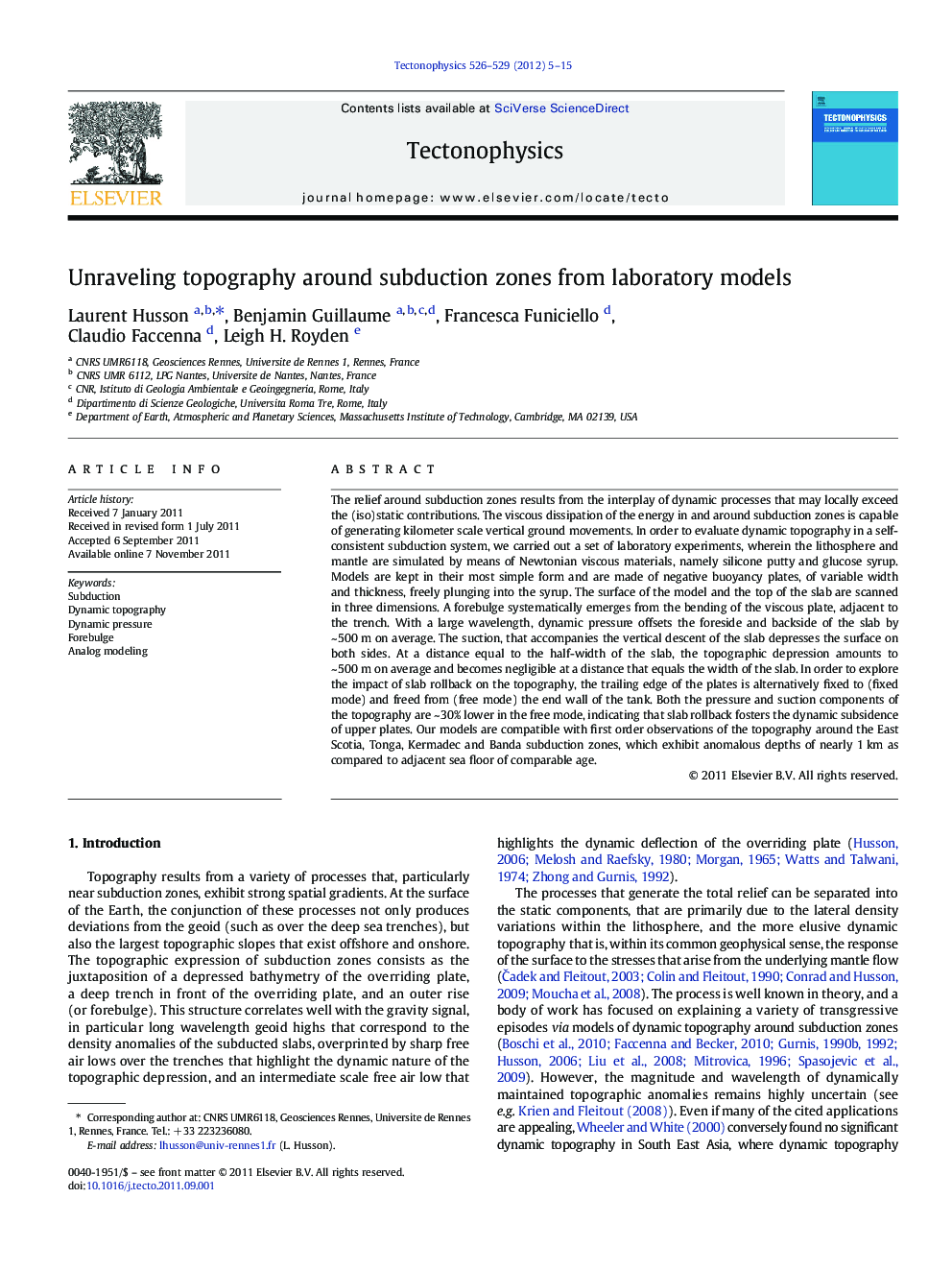| کد مقاله | کد نشریه | سال انتشار | مقاله انگلیسی | نسخه تمام متن |
|---|---|---|---|---|
| 4692893 | 1636828 | 2012 | 11 صفحه PDF | دانلود رایگان |

The relief around subduction zones results from the interplay of dynamic processes that may locally exceed the (iso)static contributions. The viscous dissipation of the energy in and around subduction zones is capable of generating kilometer scale vertical ground movements. In order to evaluate dynamic topography in a self-consistent subduction system, we carried out a set of laboratory experiments, wherein the lithosphere and mantle are simulated by means of Newtonian viscous materials, namely silicone putty and glucose syrup. Models are kept in their most simple form and are made of negative buoyancy plates, of variable width and thickness, freely plunging into the syrup. The surface of the model and the top of the slab are scanned in three dimensions. A forebulge systematically emerges from the bending of the viscous plate, adjacent to the trench. With a large wavelength, dynamic pressure offsets the foreside and backside of the slab by ~ 500 m on average. The suction, that accompanies the vertical descent of the slab depresses the surface on both sides. At a distance equal to the half-width of the slab, the topographic depression amounts to ~ 500 m on average and becomes negligible at a distance that equals the width of the slab. In order to explore the impact of slab rollback on the topography, the trailing edge of the plates is alternatively fixed to (fixed mode) and freed from (free mode) the end wall of the tank. Both the pressure and suction components of the topography are ~ 30% lower in the free mode, indicating that slab rollback fosters the dynamic subsidence of upper plates. Our models are compatible with first order observations of the topography around the East Scotia, Tonga, Kermadec and Banda subduction zones, which exhibit anomalous depths of nearly 1 km as compared to adjacent sea floor of comparable age.
► This study shows the first laboratory models of dynamic topography.
► The forebulge arises from the viscous flexure of the plate.
► Dynamic deflection by slab suction amounts to several hundreds of meters.
► Dynamic pressure offsets the topography by hundreds of meters.
► Our models successfully reproduces real Earth.
Journal: Tectonophysics - Volumes 526–529, 10 March 2012, Pages 5–15